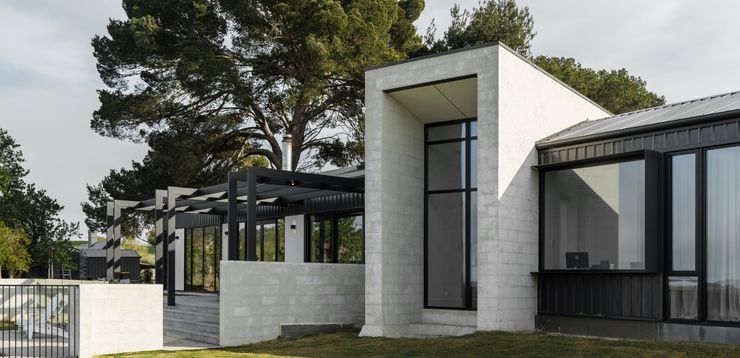The rise of living finishes: embracing the timeless beauty of raw and aged metals
In the world of interior design, there’s a growing shift toward finishes that embrace natural ageing and raw beauty. Known as ‘living’ finishes, materials like raw brass, aged brass, and aged bronze are becoming increasingly popular with designers and clients alike. These finishes are celebrated for their ability to age gracefully, developing a patina that tells the story of time and interaction.
Here, we speak to James Groom, creative director of Savage Design, a specialist in metal fixtures and fittings, who shares why designers and clients are moving towards living finishes.
How living finishes enhance interiors
If you liken an interior to an outfit, metals are often used as the jewellery that adorns the space; metal handles are like rings, and a metallic chandelier of lighting dripping from the ceiling is like a beautiful necklace that provides the finishing touch. When metals become timeworn, their beauty embeds even further into their environment, shares Groom.
“There is a beauty and honesty inherent in materials interacting with their lived environment. We are all familiar with the aesthetics of time and place seen in reclaimed timbers, heritage bricks, and bronze statues – this is the same with furniture, hardware and lighting. The visual connection and evolution of the products living their own life tell their own visual journey.”
Without the unnecessary interference of coatings, a living metal’s outer surface can oxidise and burnish to develop a unique patina. Depending on its use and the environment that it is exposed to you can expect to see burnishing, colour changes, watermarking and spotting.
“Each surface will be interacted with differently; the environments they are each exposed to are not the same, and the cleaning isn’t uniform,” shares Groom. “As a result, each piece will become one of a kind and will wear the story of its interactions with the world at large.”
Living finishes add texture, movement and warmth to hardware; when used in furniture and lighting they add a level of depth and luxury, highlighting the material used rather than the coating, which can give the metal an ‘imitation’ finish.
“Nothing beats the real thing: you can’t replicate the depth and lustre of solid materials like brass. Coating it with a clear powder coat or lacquer adds a plastic-ness to the item, cheapening it and making it feel like an imitation,” says Groom. “Over time the imitation finishes or protective coatings will age and look tired compared to an item made from the real deal.”
Moving towards sustainable design
The alternative to living finishes is to use coatings like lacquers, powder coats, anodising for aluminium, or electroplating a lesser material to look like a premium metal. These often have a lower life-span on high-touch metals, and can look tired very quickly, leading to the items being tossed into landfill or quickly needing refurbishment.
“We have made a deliberate decision based on experience in our own manufacturing and refurbishing of past products to avoid coatings in this context, letting the material speak for itself and avoiding high refurbishment costs for our clients downstream,” shares Groom.
While some coatings are better than others for the environment, many use or are made up of chemicals or have some form of waste product that requires treatment. Some coatings also mean that the metal cannot be recycled or needs another process before recycling can take place. By steering away from unnecessary coating processes, Savage Design’s pieces eliminate the environmental cost of the entire process.
“Coatings such as plating or lacquering not only add an extra manufacturing process, they also add coating refurbishment processes repeating the environmental cost each time a coating becomes tired or fails.”
Environmental sustainability is at the heart of many decisions when it comes to what designers and clients choose to use in their interiors, and living finishes are in line with this ethos. In a further move to reduce their products’ impact on the environment, Savage Design products are designed and made in Australia, keeping the environmental impact of freight to a minimum.
The latest in living finishes: blackened brass
Raw and aged metal allows the surface to age naturally once installed, but the latest in living finishes from Savage Design achieves an entirely different look through an intensive ageing process, shares Groom.
“To achieve our blackened brass we take the solid brass components through a hand applied ageing process which makes each item unique, achieving the silver sheen that overlays the deep, rich, dark tones of extreme aged brass. This finish will continue to age over time, with the environment it is in and how it is used affecting its appearance over its life.”
The blackened brass finish is available in all of Savage Designs products from the Maddox hanging rails, to their door hardware collection and lighting.
“With items that have high engagement, like door handles, the use will burnish the finish back to reveal the golden tones of the brass beneath. On our Maddox system, or lighting when the object is only handled on installation, the blackened finish will remain undisturbed, only reacting to the environment it sits in.”
How to care for metals with living finishes
The beauty of living metals is that they can be left to age naturally, the patina and marks accrued telling the story of the fitting or fixture. If you wish to keep them looking fresh as the day they are installed, then a little TLC is required.
“Regular dusting and a wash with warm soapy water will help remove environmental build-up, but the key thing to do is to dry the item straight away. Water droplets attract dust and particles in the air and this is what causes the metal to react, particularly when salt water is around.”
Be sure to use soft clothes in the process, particularly on soft metals, as abrasives can mark the surface with micro scratches.
Explore fixtures and fittings with living finishes from Savage Design










